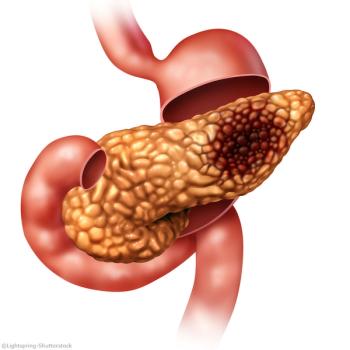
PROTECTIVE-2 Study Meets Primary End Point of Preventing Grade 4 Neutropenia
Plinabulin plus pegfilgrastim met the primary end point of the phase 3 PROTECTIVE-2 registrational study to prevent grade 4 neutropenia.
Positive topline data from the phase 3 PROTECTIVE-2 registrational study showed that plinabulin in combination with pegfilgrastim (Neulasta) met the primary end point of preventing grade 4 neutropenia, according to BeyondSpring, the developer of plinabulin.
Plinabulin plus pegfilgrastim is believed to be the first product candidate to show improvement over standard of care (G-CSF monotherapy) for chemotherapy-induced neutropenia (CIN), a complication which affects as many as 440,000 patients with cancer in the US annually.
“These data clearly demonstrate the potential for this combination to offer superior therapy compared to standard of care in the prevention of CIN,” Douglas W. Blayney, MD, professor of Medicine at the Stanford University School of Medicine and the global principal investigator for plinabulin's CIN studies at BeyondSpring, said in a press release. “With current therapy, grade 4 neutropenia still occurs in more than 80% of patients after chemotherapy, primarily in week 1 after chemotherapy, which increases emergency room visits and hospitalizations due to infection and febrile neutropenia. Grade 4 neutropenia is also associated with increased mortality and reduced long-term survival due to reduction, delay, or interruption of chemotherapy.”
The double-blind, active-controlled, global PROTECTIVE-2 study treated participants with either docetaxel, doxorubicin, and cyclophosphamide (TAC) on day 1 in a 21-day cycle of treatment in combination with 40 mg plinabulin on day 1 dose plus 6 mg pegfilgrastim on day 2; or a single dose of 6 mg pegfilgrastim on day 2 of treatment. A total of 221 patients were enrolled, including 111 patients in the combination arm and 110 in the pegfilgrastim arm.
Specifically, the study demonstrated a statistically significant improvement in the rate of prevention of grade 4 neutropenia in cycle 1 (31.5% vs 13.6%, P = .0015). Additionally, statistical significance was achieved in all key secondary end points, including duration of severe neutropenia (DSN) and absolute neutrophil count (ANC) nadir.
Data for the secondary end points included:
- DSN cycle 1 day 1-8 (ANC < 0.5 x 109 cells/L; P = .0065)
- DSN cycle 1 (P = .03)
- Mean ANC nadir cycle 1 (x 109 cells/L; P = .0002)
- Duration of profound neutropenia cycle 1 (ANC < 0.1 x 109 cells/L; P = .0004)
Regarding safety, there was a lower frequency of grade 4 adverse events in the combination arm (58.6%) compared with the pegfilgrastim monotherapy arm (80.0%).
Importantly, plinabulin in combination with pegfilgrastim was granted breakthrough therapy designation by the FDA and NMPA in China for use in the prevention of CIN. BeyondSpring indicated it also anticipates submitting a new drug application for the drug combination in the first quarter of 2021.
In addition to plinabulin being developed as a treatment option for the prevention of CIN, it is also being investigated as a direct anticancer agent in a global phase 3 trial of plinabulin plus docetaxel for non-small cell lung cancer, with the final data read-out expected in 2021.
Reference:
BeyondSpring Announces Positive Topline Results from its PROTECTIVE-2 Phase 3 Registrational Trial of Plinabulin in Combination with Pegfilgrastim for Prevention of Chemotherapy-Induced Neutropenia [news release]. New York. Published November 16, 2020. Accessed November 17, 2020. https://www.globenewswire.com/news-release/2020/11/16/2127150/0/en/BeyondSpring-Announces-Positive-Topline-Results-from-its-PROTECTIVE-2-Phase-3-Registrational-Trial-of-Plinabulin-in-Combination-with-Pegfilgrastim-for-Prevention-of-Chemotherapy-In.html
Newsletter
Stay up to date on recent advances in the multidisciplinary approach to cancer.

























































































